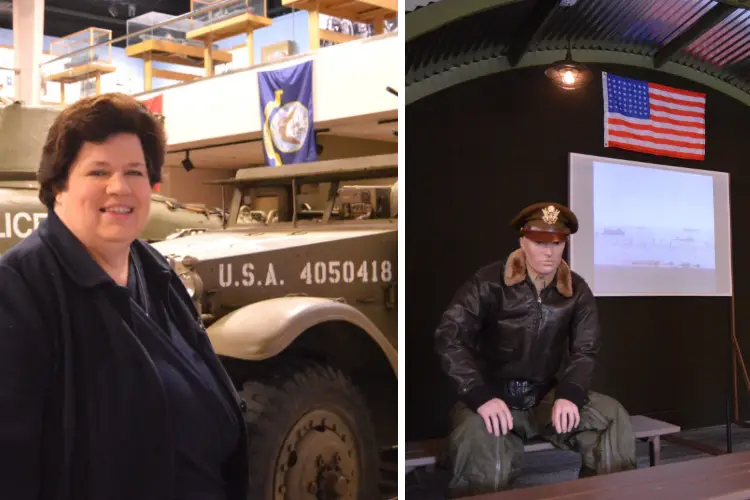For visitors of the Wright Museum of World War II in Wolfeboro, one of the highlights is the chance to talk to docents who not only know history, but lived it.
“Many of our volunteers can provide first-hand accounts of many different war campaigns and home front experiences,” said Executive Director Mike Culver. “These accounts provide context and reveal glimpses into men and women we cannot forget.”
One individual that visitors will not forget this year is docent Brian Allen, whose experiences in the Vietnam War are shared in a display within the exhibit, Vietnam: The Real War.
Serving within the 101st Airborne Division in Vietnam from April 1970 through March 29, 1971, Allen was drafted after he dropped out of college.
“Our A.O (area of operation) was huge — the A Shau Valley was ours,” he recalled.
Noting he spent his entire year in and around the Valley, Allen referred to it as “the worst duty in all of Vietnam.”
“We would spend 30 to 45 days straight in the jungle before going back to our main base at Camp Evans for maybe a week of refitting and training,” he explained. “Our only respite might be a week of firebase guard or rebuilding the firebase.”
He said they would be resupplied every 4 or 5 days if weather permitted.
“We went hungry often,” he added.
His jobs during the war included first-asst. machine gunner and then M-60 machine gunner, which he acknowledged “was kicking [his] butt in the jungle.”
“A big strong guy was my assistant gunner, and he asked if he could take it over.” he said. “I said, ‘Yes.’”
On June 26, 1970 after a little over a month “humping and acclimating to [his] platoon,” Allen said they were overrun and decimated.
“Only 6 of us were not killed or wounded,” he said. “I was lucky.”
Noting he lost 2 good friends and his squad leader in the coming days, Allen said they were hit early in the morning on July 7 during which time he took “a little shrapnel.”
“We did well but had 19 men wounded and a tracker dog,” he said.
Allen was then involved in a friendly fire incident that killed the point man from a unit that was coming to their defense. After that, their company was down to under 20 men.
“We were ‘opconned’ to Alpha company because they had also been decimated,” he said. “Shortly after that, we returned to the rear because we were ‘combat inefficient,’ which meant not enough manpower to operate as a company.”
According to Allen, the 101st Airborne Division was involved in the last American offensive operation of the war.
“It was a battle over Firebase Ripcord, which was way out just north of the A Shau,” he said. “We wanted it and so did North Vietnam because it overlooked their main trails into the lowlands.”
The battle, he said, lasted 23 days.
“It ended up with our evacuating the base after a loss of 74 men during the operation,” he said.
In reflecting on his many years as a volunteer, Allen said his favorite part is talking with other veterans.
“For veterans of all wars, the museum, I think, is cathartic,” he said. “I have seen World War II vets in tears. The brotherhood of all vets from all wars is amazing, especially my combat brothers.”
If there is one thing he hopes all visitors, especially younger generations, can take away from their time at the museum, Allen cited perspective.
“I don’t think today’s younger people understand that back in WWII, Korea and Vietnam, men were ordered to go to war,” he said. “They don’t know what drafted means. They think it is like being the NFL. They don’t understand sacrifice, or at least some of them don’t.”
The region’s leading resource for educators and learners of all ages on World War II, The Wright features more than 14,000 items in its collection that are representative of both the home front and battle field.




